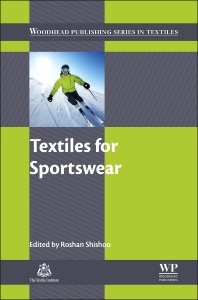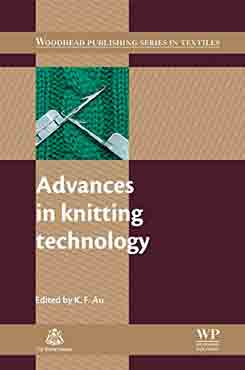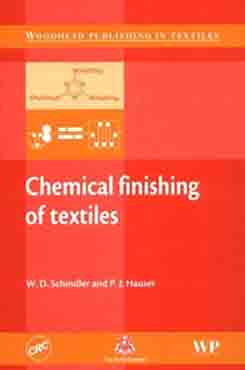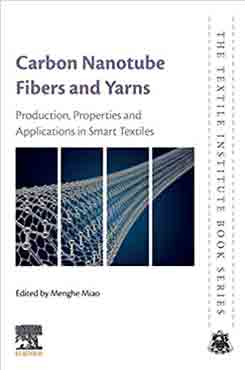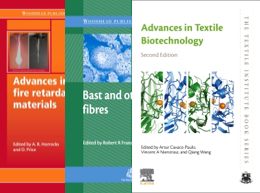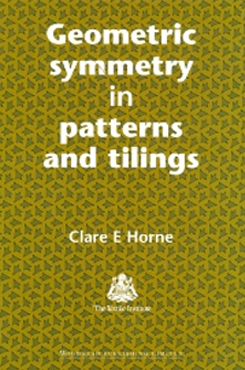Description
Textiles for Sportswear is an important book that systematically covers key trends in design and materials, the use of novel and smart fabrics, and a range of specific applications. The book begins by surveying the principles of textile applications in sport, including design, materials, and production technology. The uses of smart textiles in sportswear are then examined, from intelligent materials to wearable technology. Final sections of the text explore comfort in sportswear, sportswear for protection, and recent advances in sportswear technology that are currently being applied to particular sports.
Key Features
- Reviews the principles of textile applications in sport, including design, materials and production technology
- Examines the uses of smart textiles in sportswear
- Discusses how recent advances in sportswear technology are being applied to particular sports
Readership
Textile and clothing scientists and technologists, postgraduate students, designers, material buyers, research and development staff in the sportswear industry, biomedical researchers and sportspersons in general
Table of Contents
-
- Part One: Materials and production technology
- 1: Introduction to textiles in sport
- Abstract
- 1.1 Overview
- 1.2 Developments in fibres and textile materials for sportswear
- 1.3 Design considerations in sportswear
- 1.4 Advances in sportswear manufacturing techniques
- 1.5 Sportswear and comfort
- 1.6 Sportswear and protection against impact
- 1.7 Future trends
- 1.8 About the book
- 2: Environmentally conscious fabric selection in sportswear design
- Abstract
- 2.1 Introduction
- 2.2 Performance requirements of fabrics for sportswear
- 2.3 Natural and regenerated fibres
- 2.4 Synthetic fibres
- 2.5 Waterproof fabrics and finishes
- 2.6 Wearable electronics
- 2.7 New approaches in corporate social responsibility
- 2.8 Conclusion—the need for clear certification
- 2.9 Sources of further information and advice
- 3: Recent developments in elastic fibers and yarns for sportswear
- Abstract
- 3.1 Introduction
- 3.2 Elastomeric fibers in sportswear
- 3.3 Elastomeric yarns in sportswear
- 3.4 Elastomeric fabrics in sportswear
- 3.5 Applications of elastomeric fiber and yarns in sportswear
- 3.6 Future trends
- 3.7 Sources of further information and advice
- 3.8 Conclusion
- 4: Biomimetic approach to the design of textiles for sportswear applications
- Abstract
- 4.1 Introduction
- 4.2 Biomimetic textiles for sportswear
- 4.3 The future
- 5: Knitting technology for seamless sportswear
- Abstract
- 5.1 Introduction
- 5.2 The manufacturing pipeline of sport garments
- 5.3 Requirements for sport garments and their engineering
- 5.4 Methods of manufacturing knitted sport garments
- 5.5 Application of seamless technologies in sportswear
- 5.6 Conclusions and future trends
- 5.7 Sources of further information
- 6: Joining techniques for sportswear
- Abstract
- 6.1 Introduction
- 6.2 Specific requirements and solutions for sportswear
- 6.3 Advances in non-traditional fabric joining technologies and future trends
- 6.4 Conclusions
- 1: Introduction to textiles in sport
- Part Two: Sportswear for performance and protection
- 7: Physiological strain and comfort in sports clothing
- Abstract
- 7.1 Introduction
- 7.2 Physiological strain in sports
- 7.3 Thermal strain indicators
- 7.4 Comfort and discomfort, thermal sensation, and wetness
- 7.5 Sport textiles and clothing in relation to heat loss and sweat
- 7.6 Future trends
- 7.7 Conclusion
- 7.8 Sources of further information
- 8: Wearable sensors for sports performance
- Abstract
- 8.1 Introduction
- 8.2 Assisting sports performance
- 8.3 Requirements for wearable sensors
- 8.4 Types of wearable sensors
- 8.5 Potential and commercial applications in sportswear
- 8.6 Challenges
- 8.7 Future trends
- 8.8 Conclusion
- 9: Cold weather sports clothing
- Abstract
- 9.1 Introduction
- 9.2 Heat exchange mechanisms and heat balance
- 9.3 Thermal insulation properties of fabrics
- 9.4 Overall performance of cold weather sportswear
- 9.5 Future trends
- 9.6 Conclusions/outlook
- 10: Protective headgear for sports
- Abstract
- Acknowledgments
- 10.1 Introduction
- 10.2 Characterization of sports helmet components and materials
- 10.3 Characterization of sports helmet materials
- 10.4 Safety considerations
- 10.5 Future directions
- 10.6 Sources of further information and advice
- 11: Sportswear for snow sports
- Abstract
- Acknowledgements
- 11.1 Introduction
- 11.2 Textiles in recreational snow sports: material considerations
- 11.3 Textiles in competitive snow sports
- 11.4 Textile-based structures in snow sports equipment
- 11.5 Safety in snow sports
- 11.6 Designing for the future
- 11.7 Conclusions
- 7: Physiological strain and comfort in sports clothing
- Index
- Part One: Materials and production technology
